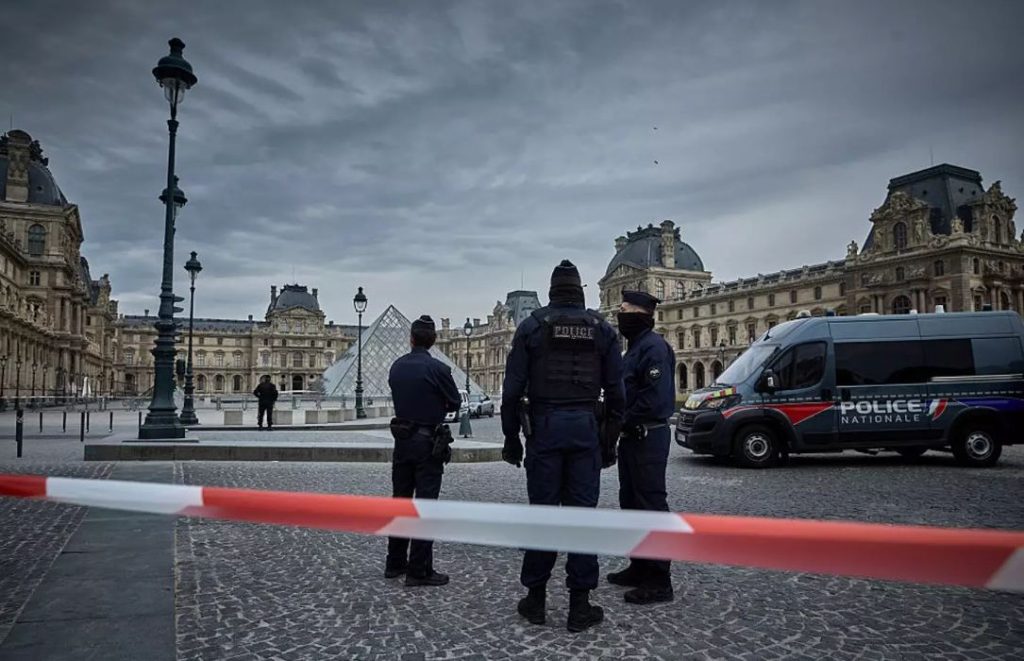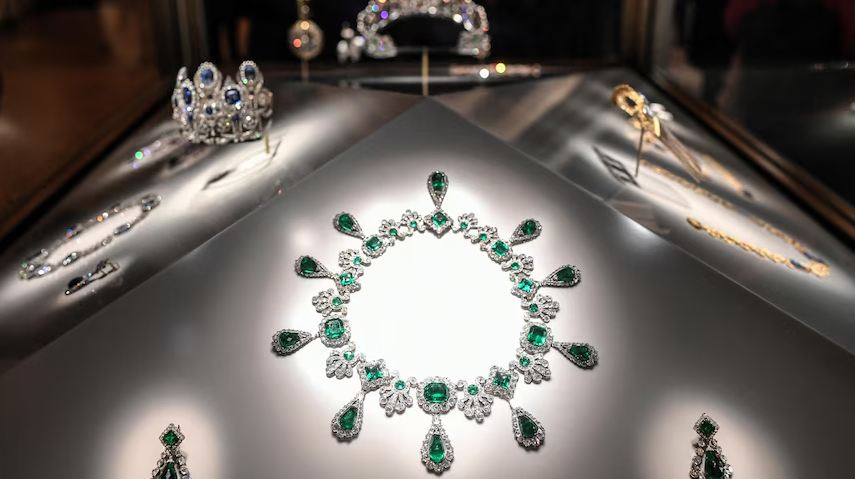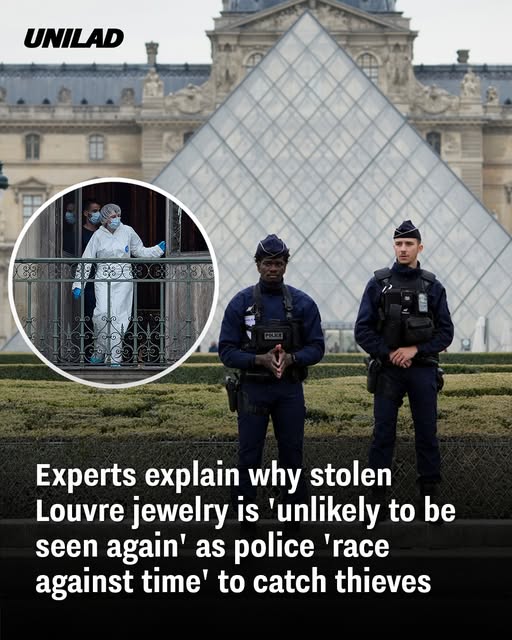On the morning of October 19, 2025, a highly trained team of four masked intruders carried out a lightning-fast robbery at the Louvre Museum in Paris. Disguised as construction workers, they used a crane-mounted lift to climb onto the upper floors of the museum’s river-facing façade. In just six to seven minutes, they broke into the Galerie d’Apollon, smashed the display cases, and made off with eight priceless jewels belonging to France’s imperial past.
What Was Stolen
The stolen collection included items once worn by Empress Eugénie, Queen Marie-Amélie, Queen Hortense and Empress Marie-Louise: a sapphire tiara, matching sapphire necklace and earring set, an emerald and diamond necklace and earrings, a large brooch, and a royal tiara. One ninth item—the crown of Empress Eugénie, tipped to be worth tens of millions—was dropped during the getaway and recovered damaged outside the museum.

Why Recovery Is Highly Unlikely
Experts warn that the chances of seeing these jewels again are extremely slim. Unlike paintings, which must be sold through visible channels, jewels can be taken apart, melted down, recut or blended into the illicit global gem trade—erasing nearly all traces of their provenance. For example, one specialist said: “It’s unlikely these jewels will ever be seen again. Professional crews often break down and re-cut large, recognizable stones to evade detection.”
Possible Trajectory of the Stolen Items
There are two main scenarios under consideration. In one, the jewels were stolen on commission—perhaps for a private collector who wanted the items intact and could negotiate quietly. In the other, the objective was simply raw value: the thieves may quickly have disassembled the pieces into gold, diamonds and gemstones, to launder through underground channels. If the second scenario is the reality, recovery essentially becomes impossible.
For the Museum and the Country, a Symbolic Blow
This was more than just a burglary. The jewels formed part of France’s cultural heritage, displayed in the same museum wing that houses iconic global treasures. The speed and precision of the heist exposed glaring gaps in security and triggered a public outcry.
Security Flaws Laid Bare
The fact that intruders could place a lift at the Louvre’s exterior, gain access to a balcony, cut through windows and escape on motorbikes within minutes has raised serious questions about the museum’s preparedness. Investigations reveal that surveillance was incomplete in certain gallery areas and staffing pressure was extreme—especially given the scale of visitors and the value of holdings.

What This Means Moving Forward
Given the ease with which the jewels could be dismantled and dispersed, authorities face an uphill battle. The best hope for recovery lies in swiftly intercepting the perpetrators—before they re-engineer the loot beyond identification. But hindsight has already moved into the realm of precaution: museums and cultural institutions everywhere are now reviewing how to protect high-value objects that cannot simply be locked away.
Lessons for Cultural Heritage Protection
The heist serves as a serious warning: security is only as strong as its weakest point. Even world-renowned institutions are vulnerable if maintenance, staffing and surveillance fall behind. Crowded visitor halls, construction zones and tourist flows can create exploitable openings. The event may trigger broader policy shifts and investment in protection, but the cost of complacency in the meantime is now painfully visible.

















